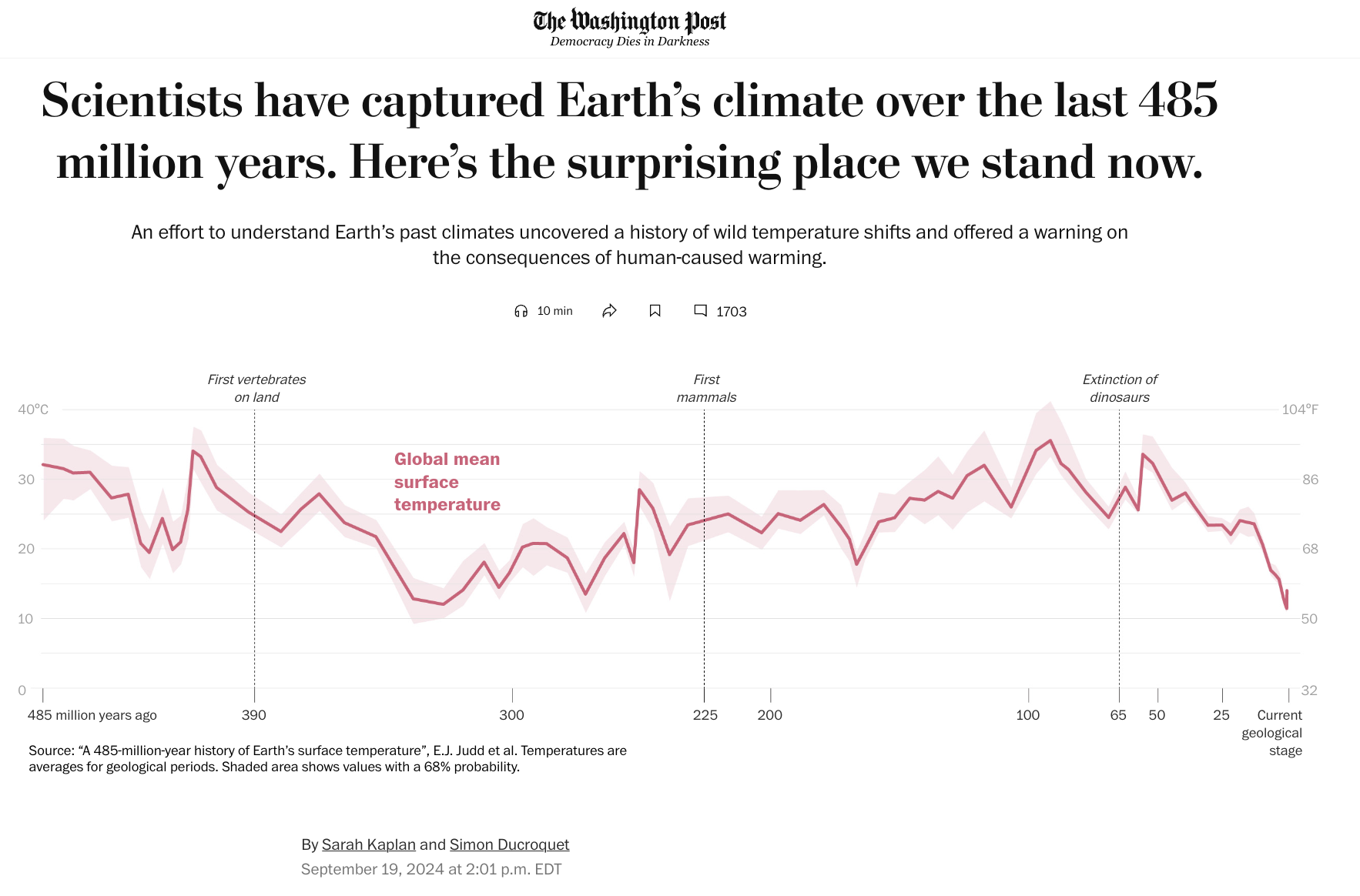
Watch: Joe Rogan confronts Sen. Bernie Sanders with WaPo chart showing Earth cooling over last 485 million years – Bernie responds: ‘I’m not sure. I didn’t read that article’
WaPo features shock graph showing Earth cooling: ‘Scientists have captured Earth’s climate over last 485 million years’ – ‘Reveals world was in a much warmer state for most of the history of complex animal life’ – ‘History of wild shifts


